|
|

|
|

|
| The
Minoans were a people living on the island of Crete in the middle of
the Eastern Mediterranean Sea. We know very little about
them. Their writing has never been deciphered. We know of
them mainly through the magnificent palaces and some of the artwork
which survived them – and the ancient myths told about them later
by the Greeks. They established a very prosperous maritime trading culture in the Eastern Mediterranean and Aegean Seas – reaching the height of their power and wealth around 1800-1600 BC. Their sea power seems to have been so great that no enemy could reach their island stronghold. Thus Crete itself is uniquely devoid of fortresses and town walls – but instead presents a scene of a time long ago of undisturbed peace and prosperity. The Minoans dominated all the Aegean peoples – including the earliest of the Greek migrants into the Northern Aegean area. How much influence Crete left with budding Greek culture is uncertain. But certainly it put before the rather primitive Greeks some idea of a higher life. Then suddenly decline set in for the Minoans. The island of Thera to the north of Crete suddenly exploded (ca. 1600 BC) in a volcanic eruption which destroyed life extensively in the central Aegean and seems to have set up a huge tsunami wave that apparently destroyed the Cretan naval fleet on the north shore of the island. (Was this the source of the story Plato told of the island civilization of Atlantis that so dramatically came to an end in the sea?) The Cretans seem to have recovered – though not completely. Soon after this (1500s) troubles hit Crete in the form of sea raiders – in great part the Mycenaean Greeks, who had also taken to the sea by this time. (Was this the foundation of the story about Theseus of Athens and his destruction of the Cretan Minotaur?). The Minoans seemed to have survived this – but not well. Within a couple of centuries the culture seemed simply to have withered away to insignificance. The Greek Mycenaeans – at least in part – seemed to have risen to take the place of prominence in the Aegean. |
The Palace at Knossos - after 1600 BC
Knossos - Aerial
view
Sacred horns at Knossos,
with sacred Mt. Juktas in the distance
Miles Hodges
Miles Hodges
Miles Hodges
Miles Hodges
Miles Hodges
Miles Hodges
Miles Hodges
Miles Hodges
Miles Hodges
The Throne of Minos
Miles Hodges
The Throne Room at
Knossos
Miles Hodges
Miles Hodges
Minoan Religious Art
Bull sacrifice and sacred
tree. Detail from the second side of the Hagia Triada sarcophagus
Heraklion Archeological
Museum
Knossos - A priestess at
the altar. (detail of the Hagia Triada sarcophagus)
Heraklion Archeological
Museum
The "Parisienne" fresco,
Knossos – after 1600 B.C.
Heraklion Archeological
Museum
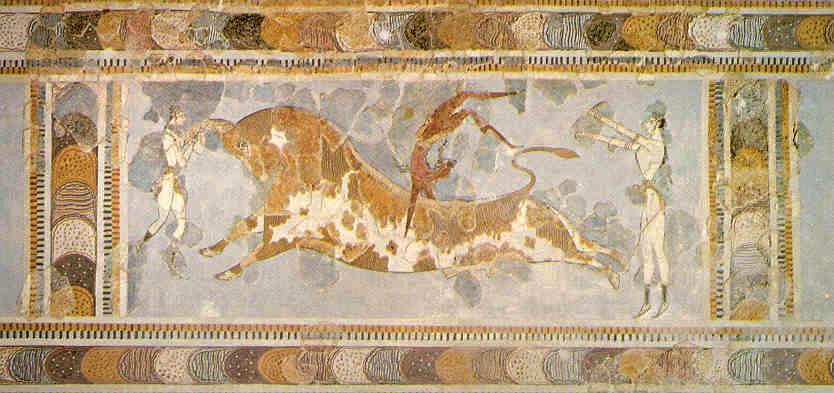
Knossos, Crete -- Bull-dancing
fresco - after 1600
BC
Heraklion
Archeological
Museum
Bull dancing / leaping at
Knossos, Crete
Cretan Bull
Heraklion Archeological
Museum
Goddesses of the Palace at
Knossos - c. 1600
Heraklion Archeological
Museum

|
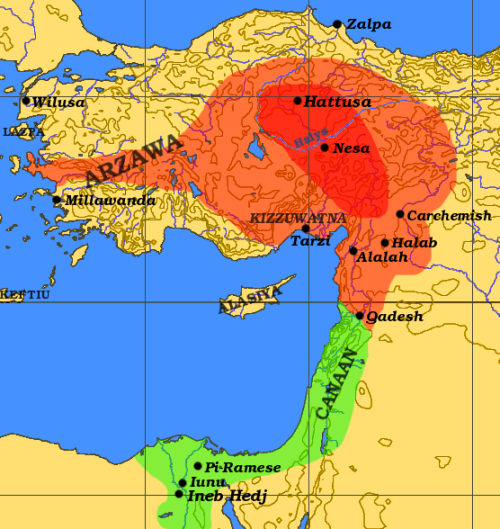
The Hittite Capital at
Bogazkale
(Hattusha / Boghazk÷y,
Turkey)
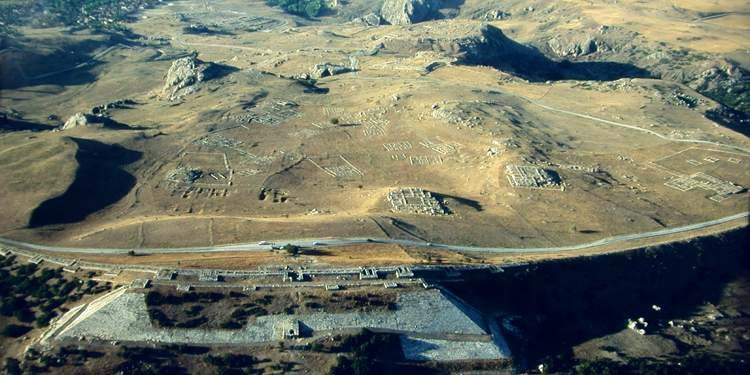
The Hittite Capital at Hattusha – Aerial View (Bogazkale / Boghazk÷y, Turkey)
Miles Hodges
Miles Hodges
Miles Hodges
Miles Hodges
Miles Hodges
Miles Hodges
Miles Hodges
Hattusha - The Lion's Gate
Miles Hodges
Miles Hodges
Miles Hodges
Gordion
Miles Hodges
Miles Hodges

|
| Ranged
along the northern portions of the Eastern Mediterranean shores
(modern-day Lebanon and Syria) were a group of competing Semitic
city-states (such as Gabal or ‘Byblos,’ Tyre, Sidon) that thrived on
sea trade. Their position placed them at the center of a trade
route by sea (much less difficult than an overland route across
mountains and deserts) between Northern Babylon and Assyria on the one
hand and Egypt on the other. Their origins remain something of a
mystery to us today. They were perhaps the Canaanites of the
Hebrew Bible – possibly later intermixed with the ‘Sea Peoples’
described by Egyptian chronologies. They secured their position
as a power center sometime in the 1200s BC. At first Byblos
(Gabal) was the dominant city-state of the Phoenicians. But by
1000 BC Tyre and Sidon had moved into that position – and soon
thereafter Tyre moved into preeminence. Like the Greeks, Phoenician prosperity increased the area’s population, forcing the Phoenicians to send out settlement groups to other parts of the Mediterranean. One of those Phoenician colonies, Carthage (close to modern-day Tunis on the north African coast) founded around 800 BC, would eventually come to possess considerable wealth and power by its own right – and send out colonies of its own and become the center of its own empire. The Phoenicians are best remembered for their creation of the first alphabetical or "phonetic" writing (characters representing the actual sounds of their language) – which was subsequently adopted in one form or another by many of the other peoples of the Mediterranean (Greeks, Etruscans, Latins). We also are familiar with their deities, Baal and Astarte, from the accounts of the Hebrew Bible: the Hebrew prophet Elijah’s power contest with the prophets of Baal and Astarte during the reign in the 800s BC of the Israelite king Ahab and his Phoenician wife, Jezebel (who was a strong supporter of the worship of Astarte and Baal). The decline of Phoenicia began with the Persian conquest of the area in 539 BC – and the probable migration of much of the Phoenician population from the area to Carthage and other colonies around the western Mediterranean – helping give rise to Carthaginian power further to the west. With the conquest of the Eastern Mediterranean by Alexander and his Macedonian-Greek army and his destruction of Tyre in 332 BC Phoenician culture went into decline and was replaced heavily by Greek culture. Nonetheless Phoenician culture continued to thrive and grow with Carthage in the Western Mediterranean – until that city’s destruction by the Romans in 146 BC. |
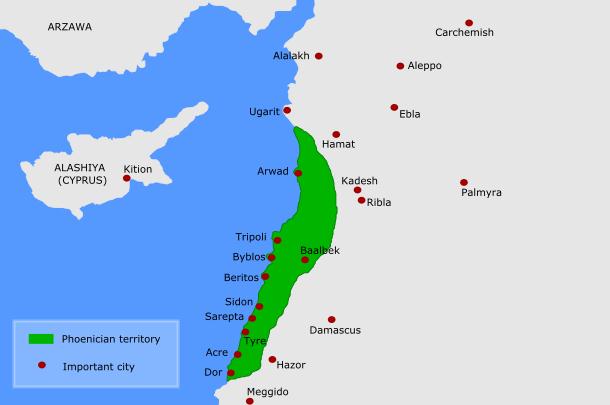
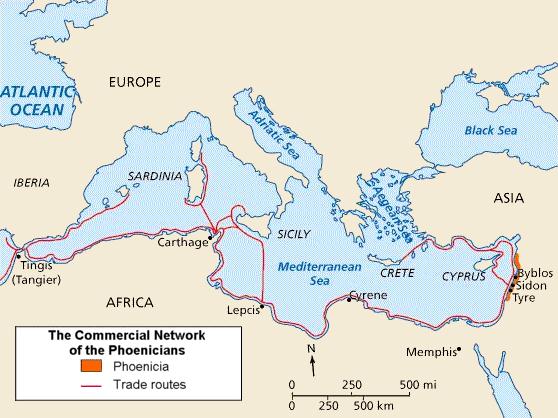
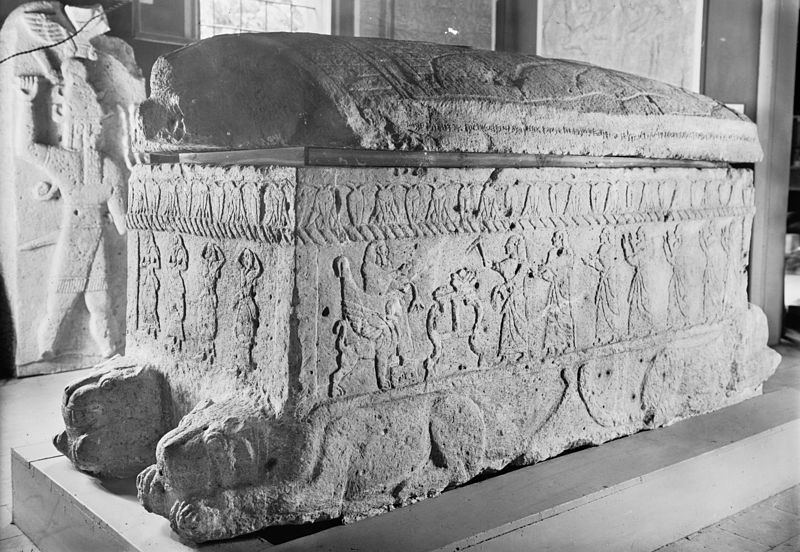
Sarcophagus of Hirman, King
of Biblos - c. 1000 BC
Beirut National Museum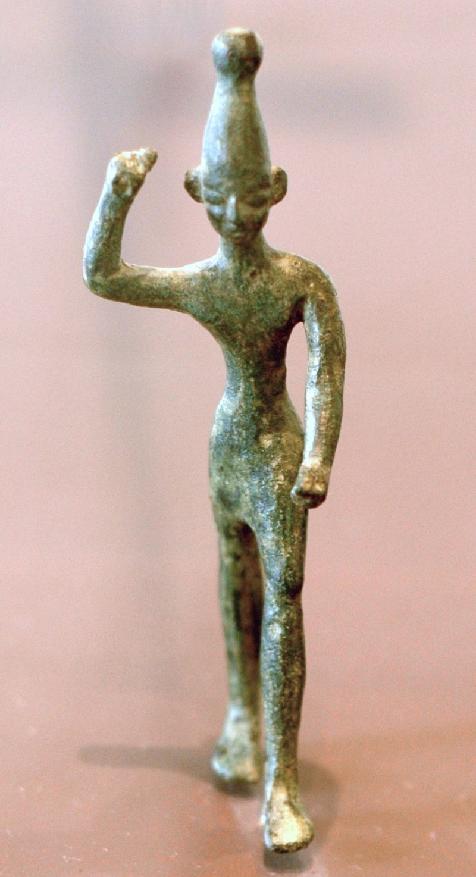
Ba'al with raised arm - found at Ugarit
Paris, Louvre
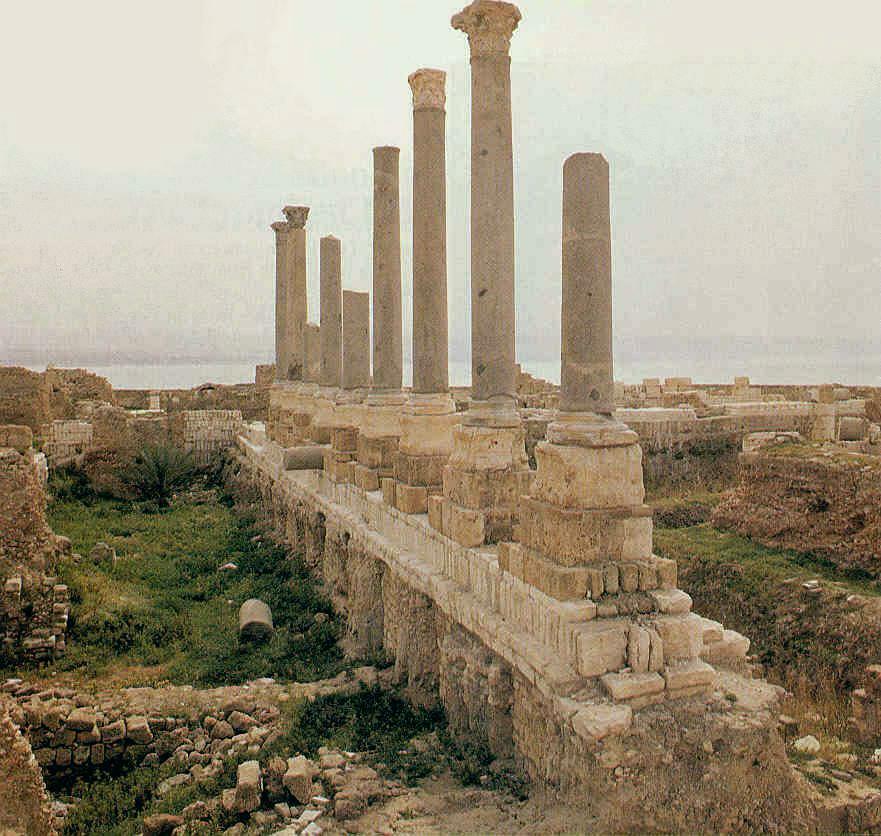
The broken towers of
Tyre

|
|
The Israelites
Just the south of the Phoenecians along the Mediterranean coast and its immediate interior, was the nation of Israel, formed many centuries earlier from 12 Hebrew tribes, tribes which themselves could trace their ancestry back to a common ancestor, Jacob (or 'Israel') – and his forefathers, the patriarchs Abraham and Isaac. They all shared common traditions about their mutual slavery in Egypt, their being led out of this bondage by Moses, their settling into Palestine (called 'Canaan' at that time) under Joshua, and then their couple of centuries of living together in Palestine, more as a confederation of tribes than as a true nation. Their consolidation into a single nation, Israel, occurred just before 1000 BC under Saul of the tribe of Benjamin. His new kingdom was then taken over by David of the tribe of Judah and his son Solomon and marked the high point of their power and wealth. But the union of these tribes was rather tenuous. David's moving of the center of their worship from Shechem in the north to his new capital city, Jerusalem, in the south (in Judah) was not well received by the northern tribes. After Solomon the Davidic kingdom split along north-south lines: the northern kingdom preserved the title Israel and the southern kingdom took the tribal name Judah. At times relations between the two kingdoms were friendly – at other times they were quite hostile. Overall the northern kingdom of Israel considered itself more sophisticated and better founded on the hard realities of material wealth and national power. The north tended to intrigue heavily in the international politics of the day, which constantly threw Egypt, Syria and Assyria up against each other. The southern kingdom of Judah clung to the notion that it was the more legitimate carrier of the divine trust of the Israelite God YHWH, with Jerusalem as the center of the true faith. The south dreamed of the day when the Judaic royal line of David would be reestablished and the nations and kings around them would be brought to acknowledge YHWH's sovereign rule in Jerusalem. Ultimately, the northern kingdom intrigued a bit too much in the power politics played by the larger powers--and drew the wrath of the mightiest power of them all, Assyria. Annoyed at Israelite presumptuousness, Assyria carried off the '10 northern tribes' of Israel (leaving the southern kingdom of Judah undisturbed) and resettled the Israelites among the other captive peoples – and brought other captive peoples to resettle the lands of the northern kingdom. As a consequence, the northern kingdom of Israel and its '10 tribes' were simply lost to history. Prophets warned that this destruction of Israel had come as a result of YHWH's judgment on the ireverence of the northern peoples – and the south had better be cautious or they too would feel the wrath of God. In any case, all that was left of the once great 12 tribes of greater Israel was mostly just the people of Judah. Thus history now began to refer to these people as Jews rather than as Israelites. And the Israelites' predecessors: the Hebrews
The ancestors of the Israelites were the Hebrews – a nomadic tribal people of Semitic stock who around 2000 BC ranged widely in the deserts running between Egypt and Mesopotamia (Iraq). One group of such Hebrews came to prominance when a young tribal leader named Abram (Abraham) migrated (2000-1700 BC?) with his kinsmen from southern Mesopotamia up along the Tigris and Euphrates Rivers, north into Syria, then down into Palestine along the central ridge of mountains. It was here, atop those mountains, that God showed him he would establish him and his descendants as a great nation. But Abraham continued his nomadic journey into Egypt – before turning back to the Promised Land. Several generations later Abraham's descendants ended up in Egypt, first as settlers then as serfs and even slaves. The story of Abraham's descendants takes up again centuries later when the God of Abraham (announcing himself as YHWH: "I am who I am" or "I will be what I will be") announced to Moses, a Hebrew-Egyptian nobleman banished to the Eastern desert, that he was to lead the Hebrew people out of slavery in Egypt and forward to freedom in the land once promised by God to Abraham and his descendants. Through a series of miracles, Moses succeeded in getting a massive and motley array of Hebrew slaves out of Egypt and into the Eastern desert – where things then went wrong when these Hebrews lost their nerve about entering into the settled lands of Canaan to claim the promise. It took another leader, Joshua, and a younger generation to finally enter Canaan – and dispossess the older inhabitants, the Canaanites, from the land. Actually the land grab took generations – and involved a great deal of intermixing of Hebrew and Canaanite, including their respective religions. It was a hard job for the Hebrew leadership preserving the tribal identity and religious foundation of the Hebrews within an alluring Canaanite environment. Then just as the Hebrews were settling in (and in danger of ethnic absorption into the more settled Canaanite culture) invaders from the Mediterranean Sea, the Philistines, began to pour into the area and settle the coastal lowlands. This seemed to have coincided with disruptive migrations going on all around the Eastern Mediterranean – such as we saw taking place in Greece about this time (1100s BC). At what point did these tribes of Hebrews become the nation Israel? Perhaps with Moses in the desert – through the need to pull together for survival. But their unity seemed to be quite loose once they settled into the Promised Land. They warred against each other as often as they allied with each other against common enemies. Also one or another tribe would establish ascendancy over the others for a while – usually through the particular leadership of one of their military leaders we today designate as 'judges.' It was a very loose arrangement. Certainly though it was through Saul of the tribe of Benjamin and then immediately thereafter through David and his son Solomon of the tribe of Judah that a true nation called Israel emerged from this Hebrew confederation. And you know that part of the story. |
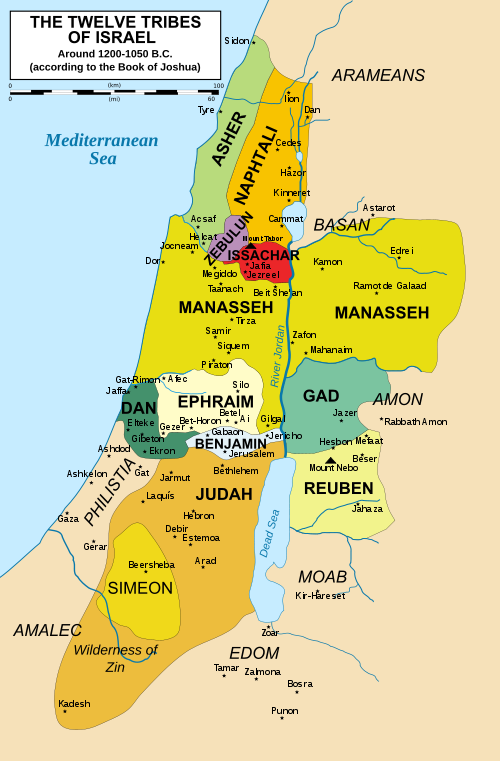
Map of the twelve tribes
of Israel
Richardprins -
Wikipedia - "Israelites"
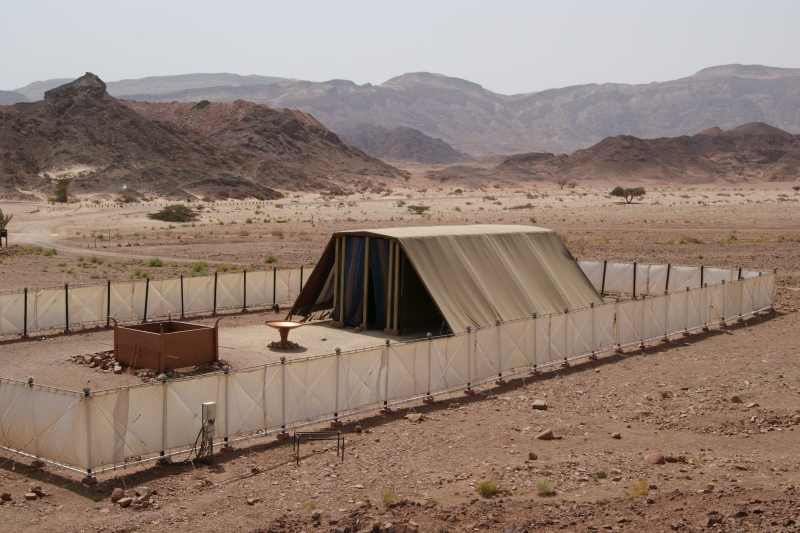
Model of the Tabernacle -
Timna Park, Israel
Jerusalem
Jerusalem and the Temple
Mount - observed from atop the Mount of Olives across the Kidron Valley
The Dome of the Rock Mosque
(with the gold dome) occupies the same position
that Solomon's Temple once
occupied
Miles Hodges
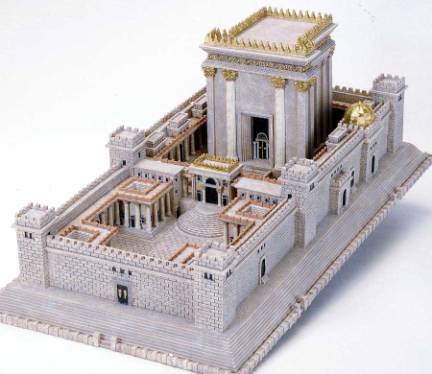
Solomon's Temple in
Jerusalem
Solomon's Temple in
Jerusalem
Gabriel Fink.- Wikipedia - "Solomon's
Temple"
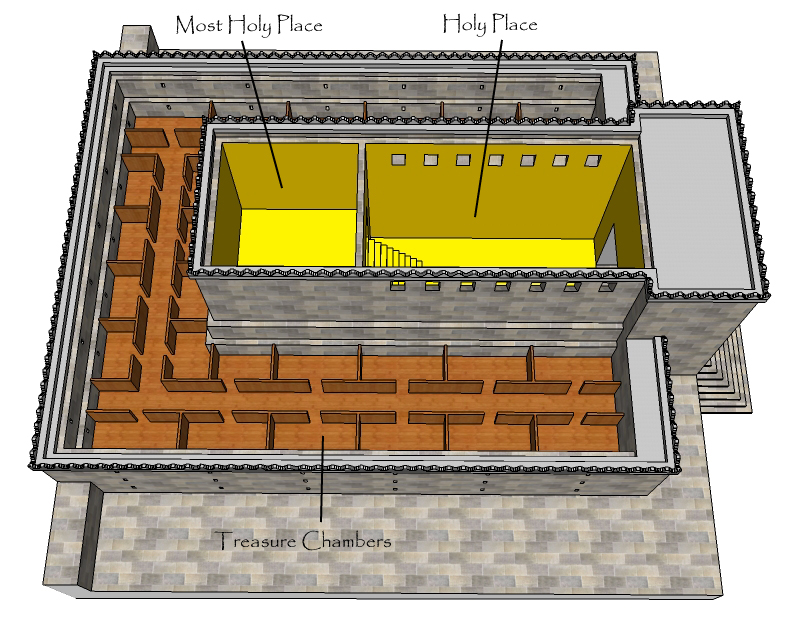
Solomon's Temple - cutaway
view
Gabriel Fink - Wikipedia - "Solomon's
Temple"
Israel splits into two kingdoms: The Northern Kingdom of Israel and the Southern Kingdom of Judah
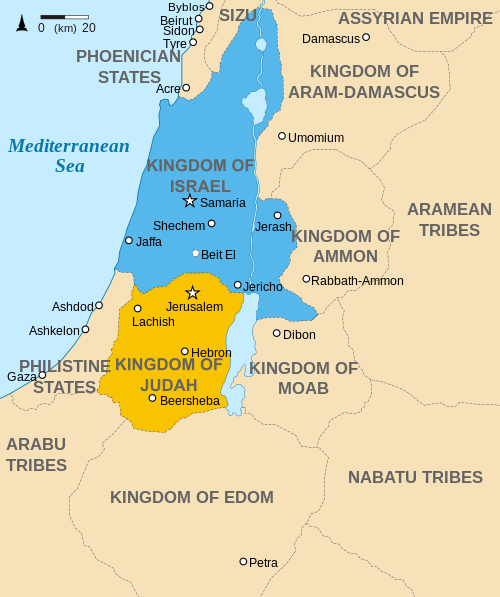
The Kingdoms of Israel and
Judah - ca. 830 BC
Richardprins - Wikipedia - "Israelites"
The Jewish king Jehu bowing
to the Assyrian King Shalmanese III - 841


 Miles
H. Hodges
Miles
H. Hodges